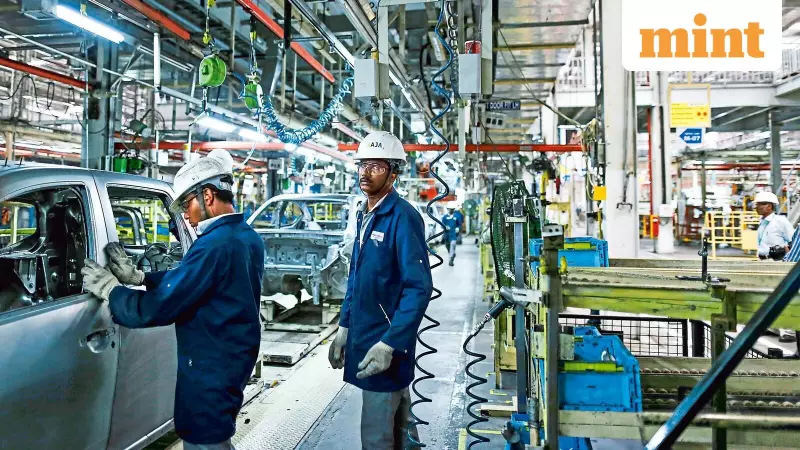
In vehicle development centers across India's major automotive companies, a significant transformation is underway. Engineers are meticulously studying completely disassembled vehicles, examining every circuit, bolt, and wire to understand what makes successful models tick.
The New Benchmark: Chinese Electric Vehicles
This process, known as benchmarking, helps automakers track technology trends and plan their vehicle roadmaps. However, the cars under scrutiny have dramatically changed. Instead of European, Japanese, or American models, Indian engineers are now focusing intensely on Chinese electric vehicles like the Xiaomi SU7, BYD Seal, Nio ET, and Zeekr 7X.
The shift highlights China's dominant position in electric vehicle technology, forcing global competitors to take notice. In confidential discussions, top executives at Indian car companies acknowledge that while they match European rivals in technology at lower prices, Chinese models have become their new reference point.
Public Acknowledgement of Changing Standards
Auto industry leaders are now openly discussing this paradigm shift. Sven Patuschka, chief technology officer at Tata Motors Passenger Vehicles Ltd, stated that automotive technology is evolving rapidly in China with exceptional focus on consumer-centric design and user experience.
"In our benchmarking studies, their presence has grown organically in recent years," Patuschka confirmed, noting that Chinese carmakers, many with backgrounds in consumer electronics, are setting new global standards.
The trend extends beyond passenger vehicles. N. Saravanan, chief technology officer of Ashok Leyland, acknowledged that commercial vehicle makers are also examining Chinese technology, particularly in software-defined vehicles with advanced features.
What Makes Chinese EVs Exceptional
Industry experts identify several factors behind China's automotive success. Chinese manufacturers typically design software first, focusing on consumer convenience, then build hardware around it. This approach reverses traditional automotive development where hardware considerations like vehicle size and aesthetics come first.
Chinese automakers have mastered offering premium features at accessible price points, making luxury and advanced technology available to broader markets. Examples include:
- Advanced driver-assistance systems (ADAS)
- Smart cockpit designs with multiple screens
- Facial recognition and gesture controls
- Dynamic suspension adapting to road conditions
- Premium interior materials combining comfort and durability
Nalinikanth Gollagunta, CEO of Mahindra & Mahindra's automotive division, noted that Chinese manufacturers have created compelling cost propositions with cutting-edge technology compared to established global OEMs.
Massive Investment Driving Chinese Dominance
China's automotive advantage stems from strategic long-term planning. Over the past decade, Chinese automakers have developed extensive in-house component manufacturing and invested heavily in global EV ecosystems. A 2025 Rhodium Group report estimates $143 billion spent on EV and battery projects, supported by government-backed subsidies for research and development.
Social media platforms showcase Chinese technological superiority through viral comparisons. One widely shared video demonstrates Nio's flagship ET9 sedan navigating an obstacle course with minimal body roll, while comparable German luxury sedans struggle with stability. Another shows BYD's 1,287-horsepower Yangwang U9 electric supercar jumping over obstacles at high speed.
The technological gap has impressed global automotive leaders. Jim Farley, CEO of Ford Motor Company, described encountering Chinese automotive technology as "the most humbling thing I've ever seen," acknowledging their "far superior in-vehicle technology."
Implications for India's Automotive Future
Hemal N. Thakkar of Crisil Intelligence explained that while the US, Japan, and Europe long set internal combustion engine benchmarks, Chinese carmakers now lead in EV technology. Thakkar believes benchmarking against Chinese models benefits Indian companies due to similarities between Indian and Chinese market conditions.
There's growing optimism within India's automotive sector. As one executive noted, with EVs gaining mainstream acceptance in India and considering the pace of local technology development, India might eventually set benchmarks for global companies to follow.
Vehicle development typically involves studying segment leaders and combining those insights with customer feedback to determine competitive benchmarks. As Indian automakers continue this process, Chinese electric vehicles have unequivocally become their reference standard, signaling a fundamental shift in global automotive dynamics.





